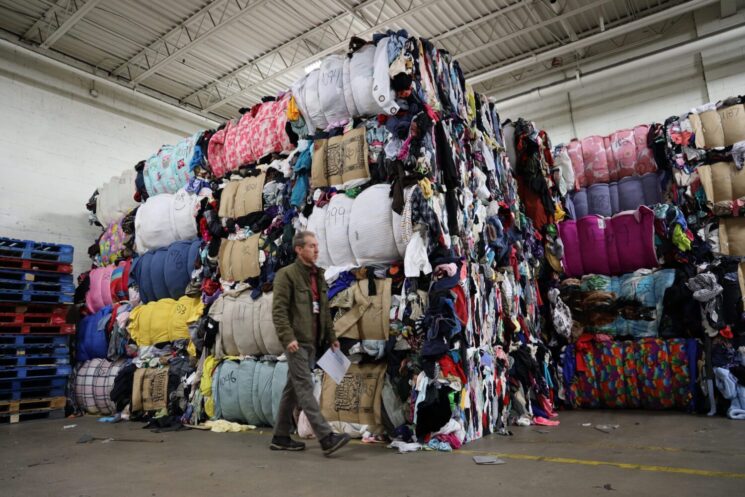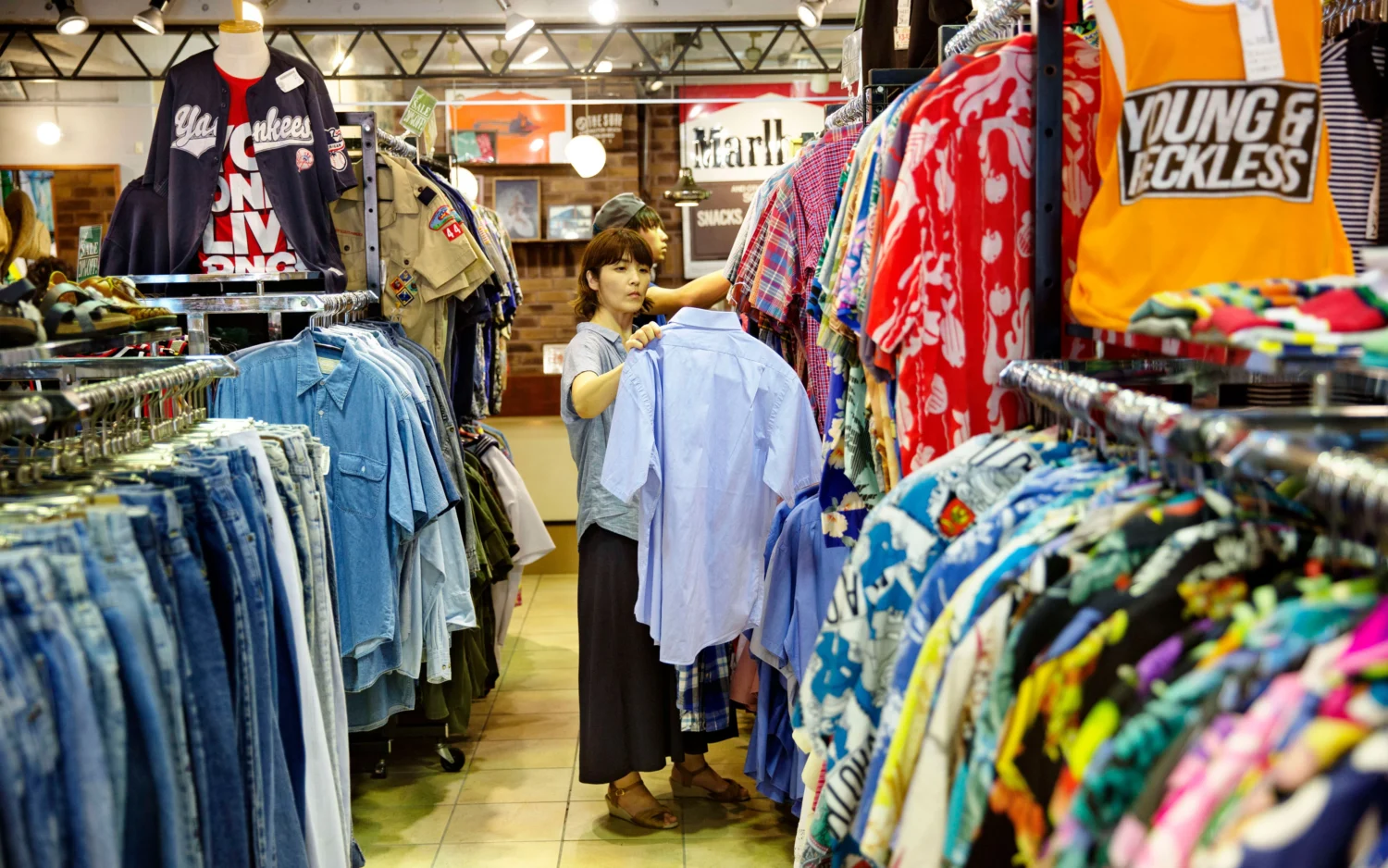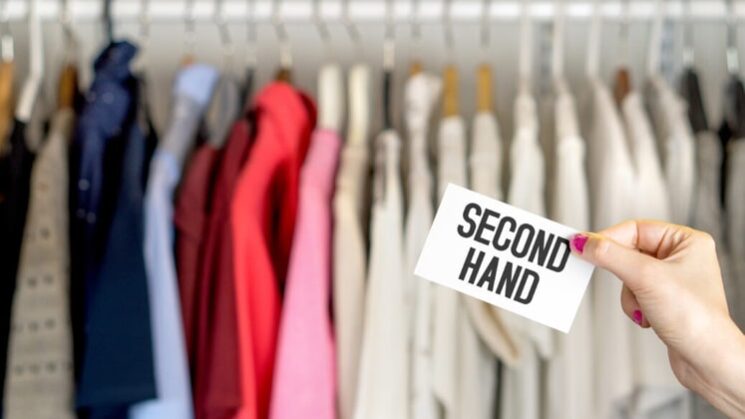A bale is a huge compressed roll of used clothes that usually weighs around one hundred pounds. These used clothes are generally wrapped in a cloth or other packaging material. In short, a bale of used clothing is a bundle of packed secondhand garments. But did you know these used bales hold great value? Yes, you heard it right, secondhand clothing businesses are flourishing across the global markets because of these bales.
In the present-day scenario, these used clothing bales are proving to be environmentally friendly and have a good social impact on nature. With the ever-rising popularity of second-hand clothes, the high demands of fast-paced fashion are also being lowered. These bales of used clothes are helping to reduce the production of new garments, as a result, reducing carbon released by the factories. The popularity of secondhand clothing is also helping control the wastage of natural resources like water.
In This Post
Environmental Consequences

The global cloth industry is massive and is growing bigger over the years with a huge profit margin. Manufacturing clothes damages the environment as many natural resources and electricity are used. Besides, the garments’ bleaching and dyeing process consists of chemical solutions in the ground and polluting the groundwater.
Presently the fashion industry’s gimmick of producing low-quality garments in mass production has also increased the waste as the life cycle of these clothes has decreased, and loads of various garments are tossed out after every few washes.
Benefits Of Used Clothing Bales To The Environment
Around 92 million tons of fabrics are produced yearly worldwide, and most of these end up as landfilling. Also, this new production of clothes reduces natural resources to a great extent, due to which many wholesalers and retailers, as per growing demand from their customers, are adopting environmentally friendly options like purchasing and selling used clothing bales. A few benefits include,
Reduce Greenhouse Gas
The greenhouse gas emissions worldwide could be reduced using clothing bales, which benefits the environment.
The fashion industry releases around 1.7 billion tons of carbon dioxide globally. This is a serious matter as it is more than air and sea travel combined. If this situation grows like this, then by the year-end of 2030, the greenhouse gas emissions by the fashion industry will increase by fifty per cent.
As per a report by the American Apparel Association in 2017, if everyone buys secondhand clothing, it could help prevent carbon emissions by 500 pounds every year. There will also be around 80% carbon footprint reduction and water.
Conservation Of Natural Resources
One of the highest consumption of energy worldwide is done by the fashion industry as it consumes too much electricity, water, and other available resources. Around two thousand seven hundred liters of water is required to produce a single cotton shirt.
By purchasing used clothing bales, the natural resources could be easily conserved as the lifecycle of the clothes gets extended, and there will be a reduction in the purchase of new fresh clothes.
Keep Away From Landfills
Using used clothing bales helps prevent the clothes from ending up in landfills. Since the 1980s, the fast fashion industry has been responsible for the massive wastage of textiles.
The invention of trendy, cheap, and disposable clothing encouraged the throwaway cloth culture among shoppers. According to the United States Environmental Protection Agency Report 2017, Americans alone generated a textile waste of 16 million tons.
Future of Secondhand Market

The world is changing fast, and so is how we shop for clothes. More and more people are now turning to online places to buy and sell used clothes.
Technology is also making a big difference. With smartphones and apps, buying and selling used clothes has never been simpler. You can take a photo of your dress or shirt and put it online for others to see and buy. It’s quick and easy!
But there’s more. In the future, we might see new ways to give old clothes a fresh look. This is called “upcycling.” It means taking something old and making it new again. For example, turning an old saree into a stylish bag or using worn-out jeans to make a new jacket. This is good for the planet and gives rise to a unique style.
In short, the future looks bright for the secondhand market. Technology and new ideas will make it even better!
Health Implications of New Clothing
When we buy new clothes, we often think about the style, color, and fit. But how often do we think about the chemicals in them? Many new clothes are made using harmful chemicals. These can sometimes cause skin problems, allergies, or even breathing issues. For example, some clothes have formaldehyde, a chemical that keeps clothes looking new and wrinkle-free. But this chemical can irritate our skin and eyes.
This is where used clothes come as a safer choice. When clothes are washed often, most chemicals get washed away. So, buying used clothes can be better for our health. We get clothes with fewer chemicals and a softer feel because they have been washed many times.
While new clothes may look shiny and fresh, they might have hidden chemicals that can harm our health. On the other hand, used clothes, which have been cleaned multiple times, offer safer and more comfortable wear. It’s always good to think about our health when we pick our clothes!
Social Impact of Secondhand Clothing

Secondhand clothing markets have always been pivotal in society, especially for low-income families. These markets offer a range of good quality, stylish clothing at a fraction of the price of new items. For families on a tight budget, this means they can dress their loved ones in comfortable and trendy attire without breaking the bank.
However, for many years, a certain stigma was attached to wearing used clothing. Some people felt it was only for those who couldn’t afford new clothes. But times are changing. Our world today is becoming more aware of sustainability and the harmful effects of fast fashion on our planet. As a result, wearing secondhand items isn’t just about cost any more; it’s a conscious choice to be eco-friendly.
Conclusion
Used clothing bales are not only benefitting businesses globally but also helping preserve nature. By reducing the high demands of fast-paced fashion and overusing of natural resources, secondhand clothing businesses are also encouraging the masses to contribute equally towards recycling.
The main raw material used for manufacturing garments worldwide is cotton. Apart from water, this natural material for its growth requires many pesticides and fertilizers. Around three kilograms of chemicals are used to produce one kilogram of cotton. Therefore, by reducing the amount of cotton needed for manufacturing, the textile industry is saving a lot of resources for the future.